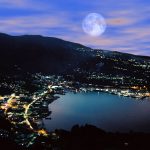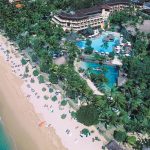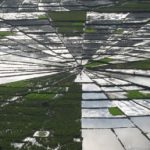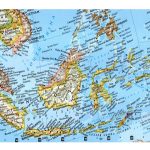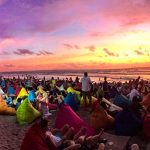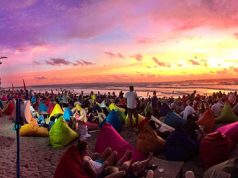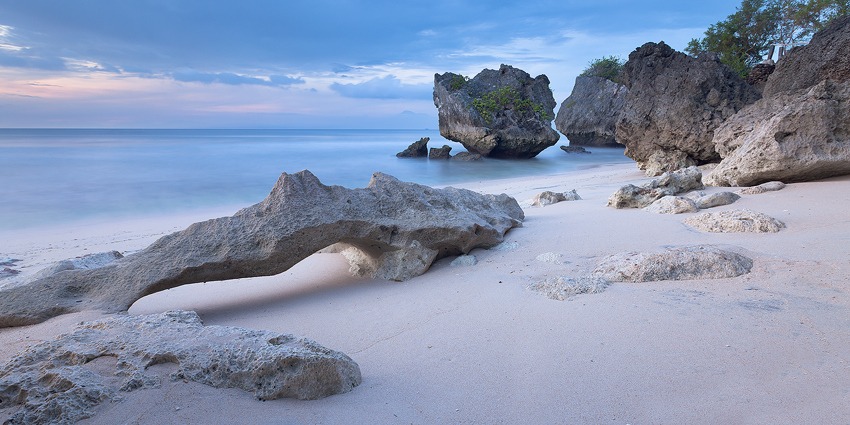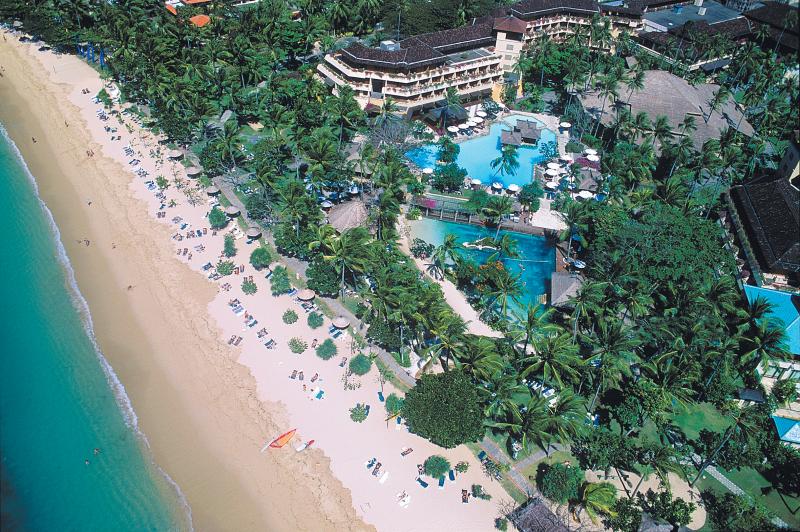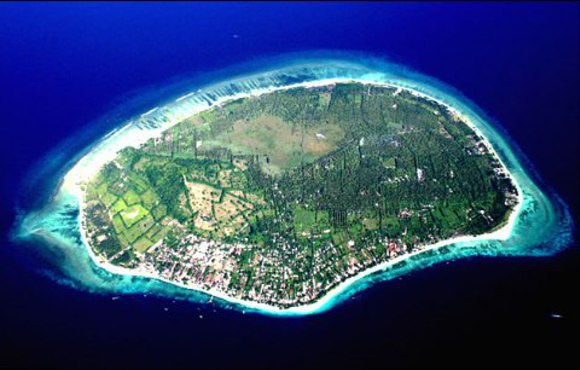It’s no wonder this plateau is called the ‘Abode of the Gods’ – it’s absolutely stunning here. Up above this 2,000 meter-high plateau, you’ll see rolling hills stretching as far as the eye can see, spot boiling pits of mud, delight in the beauty of colored lakes, and have the chance to visit some of the oldest Hindu architecture in Java.
The Plateau is home to a handful of small Hindu temples built around 750 CE as monuments to the god-ancestors and dedicated to Shiva. Although it’s thought that there were originally 400 such temples, only eight remain. You can witness the earliest architectural usage of the Javanese demonic masks and marine monsters along the niches and doorways of these small temples today.
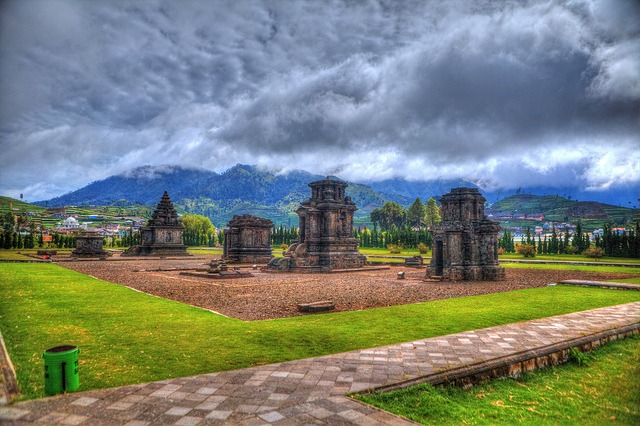
For non-archaeological experts, these small, simple temples can be a bit underwhelming – if it wasn’t for the beautiful scenic atmosphere surrounding them. The setting of these temples is what gives this area an other-worldly vibe. Mist-shrouded steep hills and sulfur-colored lakes lend the temples a particularly auspicious beauty that is unmissable.
The beautiful landscape of this volcanically active plateau, the fascination of witnessing the marshy caldera of a collapsed volcano, and the view of mineral lakes and steaming craters make Dieng Plateau a must-visit on your Java travels.
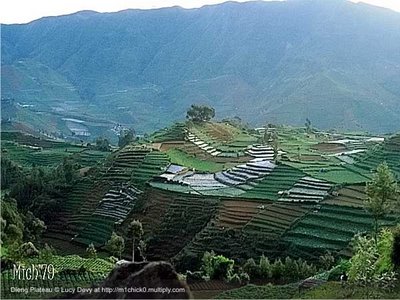
Best Time to Visit Dieng Plateau
Keep in mind that since the Dieng Plateau is located around 2,000 meters above sea level, it’s much cooler than on the surrounding lowlands. Daytime temperatures are around 15 degrees Celsius and the nights are even colder, at around 10 degrees Celsius.
It’s normally a little cooler during the dry season – from May to October – but there is significantly less rainfall during these times and is the best season to visit the Dieng Plateau, particularly in the months of June, July or August. These months tend to be the peak travel months to Dieng Plateau, but even then you won’t find crowds or hoards of tourists so it’s a very good time to go.
The rainy season stretches from November through April and although it’s a few Celsius warmer during the rainy months, the rainy season is not a good time to visit Dieng Plateau – there can be landslides and flooding that make traveling to and from the area more difficult.
How to Get to Dieng Plateau
The only way to get to Dieng Plateau is by land.
You can get to Dieng Plateau from Jakarta by catching a train or night bus from Jakarta to Purwokerto. From Purwokerto, you’ll have to catch another bus to Wonosobo, the main town on the Dieng Plateau, and then another bus to Dieng.
You can also get to Dieng Plateau from Yogyakarta by catching a bus from Yogyakarta to Magelang. From Magelang, you’ll take another bus to Wonosobo, the main town on the Dieng Plateau, and then another bus to Dieng. The trip from Yogyakarta to Dieng Plateau using public transportation takes around a day – if you catch all the transfers.
But the Dieng Plateau is only around a 4-hour drive from Yogyakarta. You can either rent a car and drive yourself or ask around at your hotel and local travel agents in Yogyakarta for a shared minivan that will do a direct route to Dieng Plateau.
How to Get Around Dieng Plateau
Getting around the Dieng Plateau area can be a bit tricky. One option is a door-to-door minibus that will take you from the main town of Wonosobo to the temples – it costs only 10,000 IDR ($1 USD) per trip and is a good option if you just need to get back and forth from those 2 locations.
Otherwise, your best option is to rent a car. A rental car – without a driver – can be as cheap as around $12 USD for a half day (12 hours).
Things to See and Do in Dieng Plateau
Watch the Sun Rise. Twice.
Watching the sunrise twice is a must see while visiting Dieng Plateau. You can see the first sunrise – the Golden Sunrise – from the tower at an altitude of around 1,700 meters above sea level. Then head over to the Hindu temple complex where the sun makes a second appearance – the Silver Sunrise – just a few moments afterwards.
Hit Up the Temples and the Natural Sights
It may be a hassle to get to Dieng Plateau, but it’s easy-peasy to look around. You can pretty much see everything – the temples and the main sights – in a day on foot. The main attractions are the temples and the geothermal area around Kawah Sikidang and all these attraction form a simple loop that’s easily covered on foot.
Start with the Arjuna complex, the small group of either Hindu shrines that are the oldest in Java, and enjoy the panoramic view of mist-shrouded hills and idyllic farmlands. From here, you can make your way to Candi Bima (Bima Temple) and then to Kawah Sikidang (Sikidang Crater), which is a fascinating pit of bubbling, boiling mud and strange, otherworldly-looking hot earth.
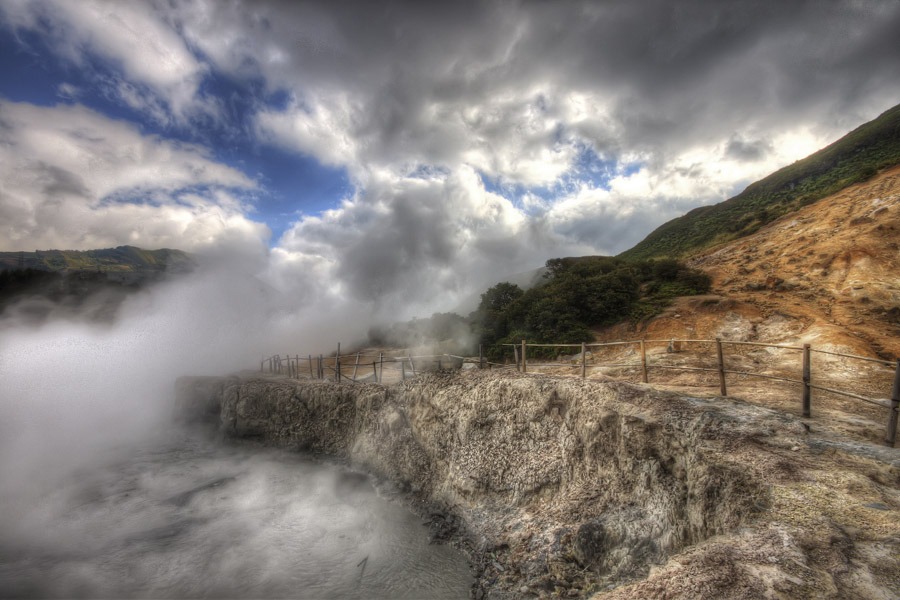
On your route, you’ll spot hot streams and small, steaming hot holes in the earth. As a volcanically-active plateau, this whole area makes for incredible, out of this world landscapes.
You’ll also stop by Telaga Warna (Colored Lake), which is a beautiful blue lake surrounded by mist-covered mountains.
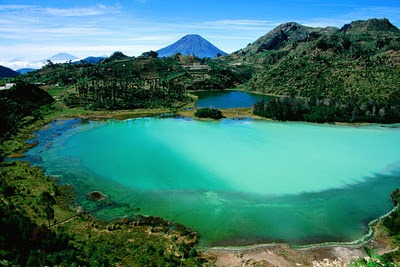
Before you know it, you’ll be back where you started. 🙂
Dieng Plateau Travel Tips
Keep in mind that Dieng Plateau is an active volcanic region and check geological reports before heading out there.
As for lodging, you have the option to either stay in Dieng village at a homestay or commute from the main town of Wonosobo, which has better facilities. The latter is a good choice is a drive up to Dieng from Wonosobo is absolutely stunning.
Keep in mind that Dieng Plateau is cold. It won’t be so bad in the daytime, but bring jeans and a light jacket. As for the nighttime, there is no heating and your room might be extremely cold. If you can, bring a thick blanket and some thick clothes to sleep in. Thick socks are highly advised.
If you’re staying in Yogyakarta, you’ll find travel agents offering day trips to Dieng Plateau and Borobudur. This might sound like a good idea, but you’ll end up spending most of your time on a bus and will barely get to see Dieng Plateau – it’s best to take some time to explore this area outside of a quick, day-trip tour.
Last but not least – travel insurance is a must wherever you roam.
Thanks for visiting our site Voyager – indonesiad.com and taking the time to read our post!
We’d love if you’d comment and share this post.
If you find the website helpful we would appreciate if you support us by clicking on the related Ads that Google provides you around the pages.



